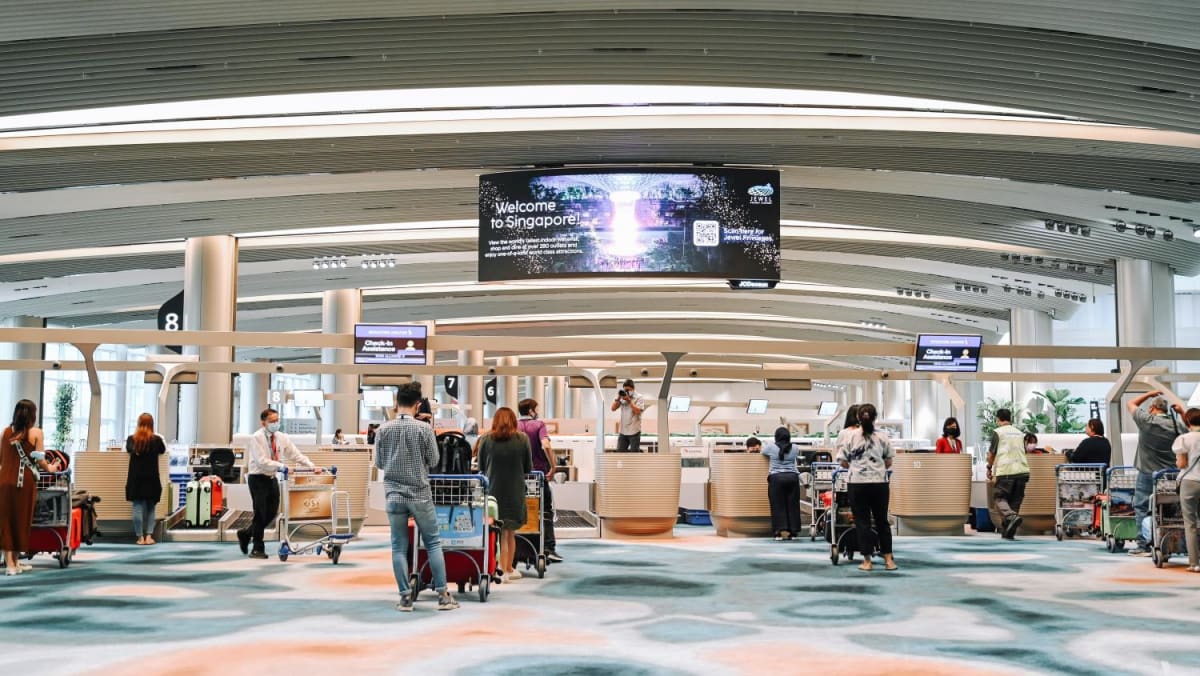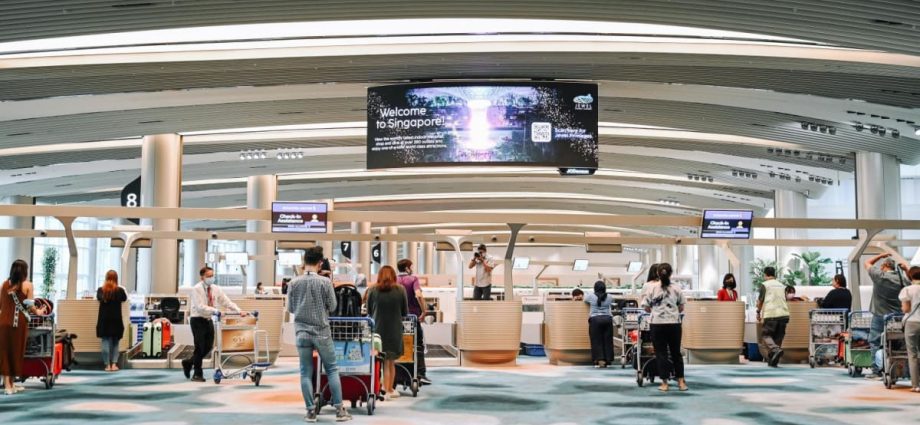
1. Reduce air-conditioning carbon footprint
Changi Airport’s air-conditioning system is its largest consumer of energy, making up 60 per cent of the total energy used by its terminals.
While the airport has ongoing initiatives to lower its air-con usage and the energy required to run the system, the panel recommended that CAAS work with stakeholders to further improve the system’s energy efficiency through innovative energy-efficient technologies and design concepts.
This includes assessing potential alternative cooling methods or technologies to guide the design for Terminal 5, and retrofitting existing terminals to achieve maximum energy savings.
That said, the airport recognises that its air-con system is an important part of its service to bring comfort to passengers. The airport will not remove air-conditioning entirely, but explore different cooling methods using the space in its terminals.
2. Deploy solar power on airfield
While Changi Airport has already installed solar panels on the rooftops of its terminals, the panel said there is scope to “significantly increase” the use of solar energy if solar panels can also be installed on the airfield, including on the grassy verges along taxiways and near the runway.
The solar panels currently supply only 4 per cent of the airport’s total energy use.
The panel recommended that CAAS conduct a technical study on the feasibility of deploying solar panels on the airfield, include assessing their impact on radar signals, flight operations, energy yields, transmission losses and economic viability.
For instance, the reflective nature of solar panels could disrupt a pilot’s landing view, while debris kicked up from a landing plane could damage nearby panels.
If shown to be viable, CAAS will engage the International Civil Aviation Organization and other industry bodies on standards and implementation.
3. Increase use of renewable electricity
Building on the previous measure involving solar power, the panel recommended that CAAS work with stakeholders to secure imported low-carbon electricity for Changi Airport and set medium-term 2030 and longer-term 2050 targets for the use of renewable electricity.
The Energy Market Authority has issued requests for proposals to bring low-carbon electricity into Singapore, amid its target of importing 4 gigawatts (GW) of electricity by 2035 to decarbonise the country’s power sector.
In the long term, there is potential for the aviation sector to tap on new domestic renewable energy production initiatives such as carbon capture, utilisation and storage, or the use of hydrogen.
4. Make all airside vehicles run on clean energy
Changi Airport currently has a fleet of up to 3,000 airside vehicles, including tow trucks, catering trucks and luggage carts. The airport has electrified about 10 per cent of them, mostly the smaller vehicles.
The panel recommended that CAAS work with stakeholders to facilitate the transition of all airside vehicles towards cleaner energy options.
This can be achieved through three pathways: Electrification of the airside fleet, conversion to hydrogen-powered vehicles and the use of biofuels.
Authorities should conduct a simulation and modelling study, along with technology trials, to better understand the deployment scale, operational challenges, policies and regulations needs for each pathway, the panel said.
5. Set up waste-to-energy facility at Changi Airport
Changi Airport has been adopting circular waste practices to reduce the volume of waste generated and consume less external resources.
Beyond this, the panel recommended a more direct decarbonisation pathway to reduce energy consumption, through an on-site waste-to-energy facility at Changi Airport.
The facility could work by channelling waste – including from arriving planes – as feedstock to generate biofuels or electricity.
CAAS should work with stakeholders to study the potential and feasibility of establishing such a facility, particularly whether there are sufficient economies of scale for such a facility, the panel said.
Authorities should also look into who would operate the facility, the kind of waste streams involved and potential disamenities that could arise.
6. Optimise airport operations
System optimisation at the airport level can improve operational efficiency and reduce carbon emissions systemically, the panel said.
Changi Airport could benefit from developing a digital model that integrates data from various sources to mirror its actual airport operations. This can then be presented in a human-centric interface for advanced predictions, simulation and process optimisation.
The panel recommended that CAAS work with stakeholders to study the feasibility of a digital twin modelling process at Changi Airport.
The study should include planning, design and end-to-end optimisation of airport processes to reduce energy consumption and minimise emissions from aircraft and airside vehicle movements.

